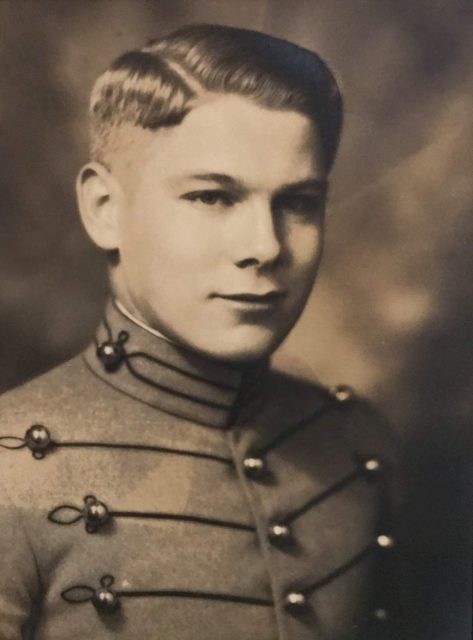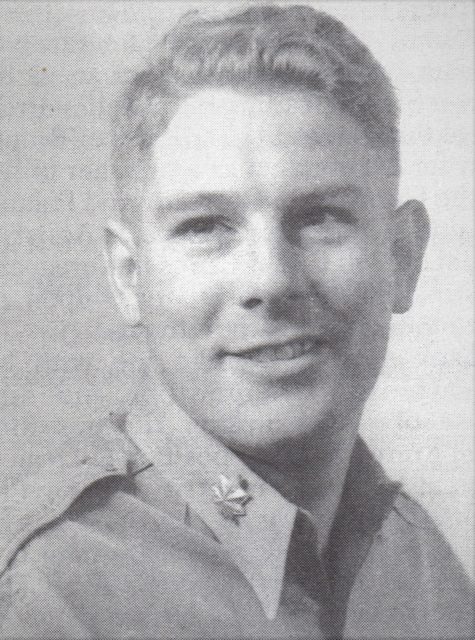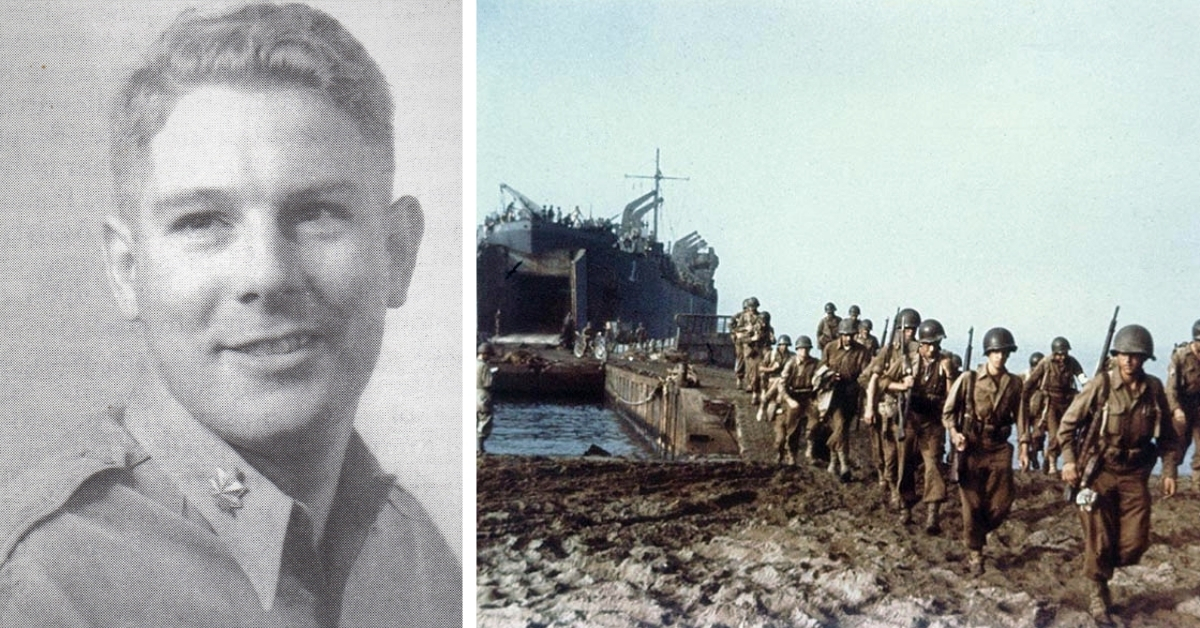Barely 30 years of age, Missouri native Elliott Woodrow Amick had already endured a lifetime of harrowing experiences and amassed an impressive list of accomplishments from his service in the U.S. Army. Despite his youth, he attained the impressive rank of lieutenant colonel, earned a Silver Star medal for valor in WWII and endured disabling combat injuries that soon resulted in his discharge from the service and the search for another career.
Born in the Howard County community of Franklin, Missouri, on March 8, 1913, Amick’s father moved the family to Roseville, California, approximately ten years later. A decorated Eagle Scout, the young man graduated with high marks from Roseville Union High School in 1931 and continued his education by earning a two-year degree at Sacramento Junior College.
The Press-Tribune (Roseville, California) reported on June 21, 1933 that Amick “will leave the first of the week to begin a four-year military training course at West Point. His appointment came through Congressman Englebright early this spring.”
While at the academy, he excelled in both academics and sports. In January 1934, the local newspaper of his hometown boasted that he had been selected for the basketball team at West Point. He later received promotion to cadet corporal and became “responsible for the discipline, neatness of appearance and command of his squad at all formations including drill and parade,” reported the Press-Tribune on July 5, 1935.

Cadet Amick was appointed to the rank of lieutenant at West Point in the summer of 1937 and graduated the following year as a member of the “Class of ’38.” Returning home for the summer, he embarked upon his active-duty military career as an infantry officer when reporting to his first duty assignment at Ft. Benning, Georgia, in September 1938.
In the spring of 1939, he wedded the former Muriel Orr, whom he met while attending the academy. “From 1941 onward, he was caught up in the vortex of mobilization, force expansion and war on a global scale,” noted in the April 1989 issue of “Assembly,” the former alumni magazine for graduates of West Point.
He and his wife became parents to a daughter in the summer of 1941, but the young officer was soon on his way to Ft. Leavenworth, Kansas, where he graduated at the top of his class while attending the General Staff College. He soon demonstrated his mettle in combat by taking part in the initial landings in North Africa while assigned to General Patton’s headquarters in early 1943.
Shortly thereafter, he was given command of 1st Battalion of the 142nd Infantry. During the invasion of Italy, he proved himself “a magnificent combat leader: outwardly fearless, decisive, adept at outwitting the opposing commander and constantly attentive to the welfare of officers and men under his command,” noted the aforementioned issue of “Assembly” magazine.
Major Amick received his first combat wound in February 1944, when struck in the right shoulder by shrapnel while commanding his battalion. His gallantry during the Italian Campaign earned him a Silver Star medal for “leading his men over extremely mountainous terrain … during an advance toward heavily defended enemy positions under intense enemy fire,” and all while wounded, reported the Sacramento Bee on June 6, 1944.

Recovering from his wound, he continued his rapid ascension through the officer ranks, receiving a promotion to lieutenant colonel. In July 1944, while serving in France with the 36th Division, he was appointed as commander for another battalion whose previous battalion commander was killed in action.
In September 1944, he received severe wounds that resulted in his second Purple Heart. Evacuated from the front lines, Lt. Col. Amick remained in the hospital for several weeks while doctors struggled, unsuccessfully, to fully repair the injuries he sustained.
Because of his wounds, reported the Press-Tribune on April 25, 1945, Lt. Col. Amick was assigned to West Point to serve as an instructor in the tactical department of the academy. In addition to his two Purple Hearts and Silver Star, he was awarded an Oak Leaf Cluster to his Bronze Medal (denoting his second award of the medal) for “heroic or meritorious achievement.”
After achieving the rank of colonel, Amick received a medical discharge from the U.S. Army on June 30, 1947. He and his wife raised three children while remaining in New York. The combat veteran spent nearly the next three decades employed by the United States Military Academy in capacities to include Deputy Director of Athletics and Director of Housing until his retirement in 1975.
The 70-year-old World War II commander passed away on November 1 1983, and found his final rest site near the institution he had dedicated a significant part of his adult life—the United States Military Academy Post Cemetery in West Point, New York.
Receiving the nickname of “Mick” while attending the academy, the young officer was compassionately remembered by his friends, family, cadets and soldiers as “always quick to lend a helping hand; and radiated the sincerity and genuineness that are the glue of friendships.”
In the “Assembly” magazine, a tribute to the memory of the departed officer provided glowing comments remarking on the characteristics that had drawn soldiers to him as both an individual and leader.
“His warm and winning smile never faded. His concept of service—to professional colleague, personal friend, individual with problem, community-at-large—never flagged. To the end of Mick’s course on earth, he was a giver.”
Jeremy P. Ämick writes on behalf of the Silver Star Families of America
